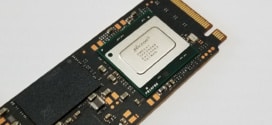BIOS Overview
The GUI of the Z77 UEFI is very smooth and works well. One area that most boards struggle on are the mouse controls whether were talking about delayed clicks or a jumpy mouse cursor it is just as smooth s silk and mouse clicks happen as if you were in windows itself. The main opening page is the EZ mode which is just a few simple clickable adjustments, but for any enthusiasts user such as me I skipped straight to the advanced mod.
The AI Tweaker is almost a mirror of every other Z77 we have seen from ASUS which is a huge relief as that means with board changes you won’t have to relearn a board every time you swap models. But another area we see this as a good thing is it means updates to the firmware will likely be easier which is why ASUS is always dropping new BIOS updates as they find ways to better tweak performance or optimize or correct an issue. The AI Tweaker section houses all of the tweaking options and allows for a fun overclocking experience as adjustments and descriptions are well laid out and described quite well.
Click Image To Enlarge
Here we have the advanced screens mentioned previously. The DRAM settings are more than adequate for standard tuning and will likely be downright confusing depending on the expertise of the user. We would suggest leaving most of the advanced options on defaults as setting them incorrectly can cause a no post condition and unless knowing how to set them correctly the performance can actually be made much worse, especially since the auto values are actually quite good. The DIGI+ controls allow for setting the amount of current and thresholds for the VRM components performance. These settings will allow for much more overclocking headroom at the expense of higher power usage and hotter VRM components as this will lower the amount of power saving features used since the extreme settings are designed for the maximum loading and extreme benchmarking setups which of course means that power savings comes secondary as priority is maximum power delivery and stability under excessive load.The CPU performance settings allow for disabling of power saving features and other CPU settings to allow either ultra stable high power benchmarking or power saving and stable regular 24/7 performance.
Click Image To Enlarge
The Advanced Tab covers many of the integrated components on the board along with the options to enable or disable specific features or functions of the board to better fit your usage model and possibly even reduce resource usage by eliminating features or components you do not plan on utilizing. One added feature you will see here is the Intel Thunderbolt control which allows configuration of the Intel Thunderbolt controller and how it functions. Also, control over SATA ports and their function can be found as well. Moving to the monitoring area we find a plethora of monitor able fields which help us get the low down on the operation of our system and find possible warning signs of an issue before it becomes a bigger problem.
Click Image To Enlarge
Here we have the monitoring/fan speed settings which allows for specialized “smart” fan settings to modulate the fans as needed. one of the last pages to round out the BIOS we have the boot screen which gives us setup of the boot devices and how the board performs during the post process.
Click Image To Enlarge
Lastly we have some of the key BIOS level tools including the ASUS SPD information which in the BIOS level will show the SPD readout directly from the DIMM that is installed. Also another nice utility is a flashing utility which can view installed drives or thumb drives to actively flash the BIOS from within the menu itself.
 Bjorn3D.com Bjorn3d.com – Satisfying Your Daily Tech Cravings Since 1996
Bjorn3D.com Bjorn3d.com – Satisfying Your Daily Tech Cravings Since 1996








































Except you cant use all features of it at the same time. I’m using all sata ports and the performance is horrendous. Windows takes pauses every 10-15s and gaming is not possible due to microstuttering and the 10-15s pauses.
Maybe it’s your setup? I’m not using all the sata ports and not sure why I would. I have replaced the msata onboard with a 128 gig that has the os on it and boot to it. I have a 2 TB hard drive with 2 OCZ Vertex 128G SSD drives for caching and my setup is working great.
If there is onboard audio card…I will love P8Z77-V Prem more.